I just got done reading an Ebook titled "Communications and Behavior Change" written by Mark Lund, CEO of Government Communications Network. It covers the factors associated with changes of behavior and outlines ways in which these factors can be manipulated. It got me thinking about a recent quote I read from marketing guru Jack Trout that states, "If your assignment is to change people’s minds, don’t take it.”
Let's take a deeper look. At the most basic level, we can look at behavior in the form of the AIDA model. This model states that providing information will spark interest that will in turn lead to an action or a change in behavior. This does make sense, however, rarely is information enough to change a behavior (smoking, tanning, drinking). Attitudes, or personal feelings towards a person, place, or thing have always been linked to behaviors, but the link is not as strong now. For example, just cause you don’t like a certain bar doesn’t mean you won’t go if your friends are all going. Just because you don't like Apple doesn't mean you won't get an iPod. However, just like with providing information, changing an attitude is often not enough to change a behavior. Cognitive dissonance comes when a person holds two inconsistent views. For example, a smoker knows that they could get cancer and live a shorter life, but more often than not they say “I know someone who lived till they were 100” or “smoking keeps me skinny” as factors that justify their behaviors. People often do this when making consumer decisions as well. "I don't really like going to that bar but it's close" or "I don't want to see that movie but it is getting good reviews." The key for communications specialists is to find a way to take out the dissonance, and motivate behavior towards what they really want to do, despite the relative information. Habit and routine are also leading factors in behavior. If you’re used to doing something, most likely you’ll continue doing it. Something new might not be so easy. For example, if you often leave the TV on all night, it would be hard for me to convince you to turn it off every night. If you love eating Red Meat, it would be hard for me to convince you to become a vegetarian. Breaking these habits often requires an emotional stir-up at the point of use. For example, to get you stop eating meat I would need to hang a picture of a bloody pig in front of your refrigerator. To get you to quit smoking I would need to put a picture of your Grandpa who died of cancer on your car’s dashboard. Emotions play a huge part in behavior changes. I suppose this is one of my personal favorites. A lot of the times, communication tries to play on emotions a little too much. For example, I just saw a Christmas campaign for Kay Jewelers that focuses on a deaf woman and her boyfriend signing to one another - too emotional. The dog commercials with the sad music – way too emotional. The thing is, they work. Mental shortcuts are also a common factor of behavior. These refer to instances where you make decisions based on events you can immediately recall. For example, most people are more scared of flying than driving because you can immediately recall a horrible plane crash. You’re more likely to buy a lottery ticket when the prize is the highest because it is easier to visualize what you could do with the largest amount of money. Communications needs to allow people to visualize everything on an equal playing field. Social norms play a huge role in the decision making process. For example, imagine you’re at a party. Typically you’re not the first one to eat whatever food is laying out, but once someone else gives it a try, it’s fair game for everyone to join in. Basic idea, but how can communications agencies send a message of “acceptable behavior” to encourage action? It requires a call to action to companies to be an opinion leader. Drive a message home and send it through respective mediums to gain followers. If you can make a destination the “place to be,” people will come. Environmental factors are another player in the communications game. For example, someone may want to use public transportation but if there aren’t any bus stations around, they’ll have to use a car. Same goes with any business. People might want to go hear live music at your bar, but if they don’t know it exists, where it’s located, or who’s playing, they’re going to choose another option. What it all comes down to is communications 2.0. It's no longer about just throwing a message out, it's about understanding the message, its audience, and their underlying reasons for behavior. Truthfully, I'm still trying understanding all this myself, but i'm excited about the possibilities. In the world of communications, being an early adopter is key. What's even better than an early adopter? An innovator. I look forward to seeing you on the other side.
0 Comments
The economy is in the dumps. It's official. I recently read an article from a recruiter who posted a job on Craigslist and received over 200 emails within a few hours. For the past few months, I've been one of those emails. I've been part of the lucky few to actually get a few interviews here and there. The problem? The competition is so stiff out there that it's almost ridiculous. There's no more chances, optimism, or hand-holding; you either fit the bill perfectly or you're not getting hired. Simple as that.
Rather than sit around and keep waiting to find the next posting on Craiglist or Monster like the thousands of others out there, I've decided to take a stab at a new, more productive approach to the down & out economy: consulting. A lot of people were confused by my Thanksgiving post. What is he doing at Upper End Properties? What is his business? What's going on? For those of you wondering, I'll give you a brief update. In October I was given my first "consulting" job as the marketing specialist for Upper End Properties, a brand new real estate company in Clayton between Brentwood and Hanley. What am I doing? I'm leading strategy behind digital and online marketing. What does this consist of? I'm giving the company a brand presence on Linkedin, Twitter, Facebook, Google, and Wordpress. I'm producing content, socializing, interacting, and doing my best to increase brand awareness and generate sales leads by using cost-effective methods that reach a direct target audience. A lot of people laugh about this whole idea of social media marketing. It's not a full-time job, it's not the end-all of marketing, and it isn't the most effective medium to get results or a return on investment, but it's free, it's powerful, and it is revolutionizing the way people interact with brands. Sure, most people can't make a living tweeting for a brand, but imagine tweeting for 5 brands. Imagine building a Facebook presence for five small companies. The future of business may not be digital, but it will be social, and if I can lead businesses in the right direction with low-cost solutions, this fad may just turn into a full-time opportunity. This leads to to where I'm at now - in the business of consulting. Without giving too many details out prematurely, I will say that there are some very exciting opportunities on the table. With the new year will come some new information regarding this business and I look forward to filling you all in. I've been experimenting a lot lately with new marketing tactics. Little things that I think can be extremely effective at little or no cost to an individual, a brand, or a company. For example, tonight I was at Pomme Wine Bar in Clayton with a few friends. On my way out, I placed two business cards on the table, and strategically dropped one on the floor on the way out. I mean, truthfully, the two on the table probably got picked up by the hostess and thrown away, and the other probably got swept up into the trash, but I can't help but think about the possibilities.
Imagine the hostess being the daughter of a couple who was looking to buy or sell a house. She'd see the card, mention it to them, and there's a sale. Imagine the young couple sitting next to us was in the market for a condo and they saw the card on the floor as they were leaving the bar. By the end of the night, I got 800,000 worth of sales possibilities just from dropping a few cards. Total cost of the marketing on my end: about 10 cents. The problem we often face in marketing is lack of participation by the audience. We can deliver some great messages through some very effective mediums, but if the audience isn't "getting" the message and exploring it on their own, then nothing has really been accomplished. I'm a marketing guy. I live for it. I dive deep into brands, interact, entertain, and engage in almost anyway way I can. The problem lies in the fact that most people aren't as fond as I. For example, being with a real estate company right now, I could go out to a parking lot and hit 100 cars with a flyer that said "TheBestHousesEver.com" that linked directly to our listings. If I got this flyer, I'd go to the site, but 99% of other people probably wouldn't. I think what I'm getting at is the idea of guerilla marketing. Giving people the chance to receive a message, but relying on them to put in some work. Is this type of messaging effective? Would you pick up my business card? Would you go to the website? I'm interested in how far people will go into the unknowns of advertising. I know the road I travel, but I think most audiences take a slightly different path. I've finally figured something out. It's something I've never really thought about, something I'm not necessarily proud of, but something I've learned to love. What is this profound realization that I speak of?
I have no niche, I'm not an expert on anything, I don't have a specific skill, and I'm not 100% sure what my strongest asset is. Sounds horrible right? Wrong. I like to consider myself a generalist. Whereas an expert is fundamentally better than everyone else at one thing, a generalist is someone who is very good at a lot of different things. I'm a writer, an active participant in social media, a blogger, an informer, a team player, a multimedia strategist, and a marketing planner. I'm not 100% devoted to any one of these titles. Quite frankly, I feel like I could add or subtract to this list at any time. The question I'd pose to you is this: "In this current economic time, what is more valuable in an employee, an expert in one specific area, or a generalist dabbling in all realms of a certain industry." In a recent interview with an account planner, I was given this piece of what I'd consider invaluable advice: "As an account planner, you should be a second best at everything you do. You need to be the second best copywriter, the second best developer, and the second best creative director." This is great advice for the ad industry, but I'd like to hear some opinions from other people as well. I personally like to believe in a wider skill set being more effective, more useful, and more accessible to a wider range of companies, but then again, maybe I'm just crazy; generally speaking or course. I love the idea of experimental advertising. A lot of companies have dropped the experimental label in exchange for more traditional words such as engaging or inspiring. The word experimental itself isn’t as glamorous as it used to be. In the past, companies had the time, the budget, the ability, and the interest to experiment on new ideas, new campaigns, and new ways to drive consumer awareness. Nowadays, companies can barely afford to put out a campaign, not much less experiment with one.
I give credit to the companies going out on a limb and toying with this idea of experimentation. Quite frankly, all the blogs I follow, all the sites I read, and all the marketing that resonates with me tends to fall into this idea of something extraordinary. I’m no longer excited by television ads, I’m just interested. I’m not longer attracted to web banners, I tend to ignore them. I’m not longer enthused about billboards, I just accept them. I think I’m just one of many looking for that next big thing in marketing; a thing in which I truly believe will be experimental. Some of the best campaigns that I’ve seen recently aren’t traditional at all. Sure they’re websites, but they’re much more than that. They’re experimental ideas, interactive platforms, interesting to consumers, and exciting for everyone. They might not bring back a 100% ROI, they might not increase sales or brand awareness, they might only reward a small segment of consumers loyal to your brand, and they might only create conversation in certain circles. The fact of the matter is, no matter what the message or medium, they are providing an outlet for engagement, an experimental attempt at advertising/pr/marketing/media arts 2.0. Let’s start with the Kodak Experience. It’s essentially a full-screen application that can be accessed via the web at this site. It is an interactive site that shows how 9 different individuals connect with one another using different Kodak devices. If you click on the Dad, it shows how he can record his son playing basketball with his Kodak Pocket Video cam. If you click on the Grandma, it shows how she stays connected with her Kodak Easyshare camera, making it easy to take and send pictures of her grandkids. Is Kodak going to sell more cameras by allowing us to play around on the site and see how people can connect? Probably not. But is it something fun, exciting, experimental, and entertaining that will allow extra engagement with the Kodak audience? Most definitely. Next, let’s look at Kleenex’s newest interactive campaign. It’s called Get Momm’d. You can access the website here. It’s an interactive platform that gives you access to 7 different moms. After you choose one, based on a variety of different categories, you can then connect them and receive advice for different things you might need. For example, if you’re sick, you can have your virtual mom send you a recommendation via text or email on how to get better. If you need a new dress, she might be able to send you links to her favorite places to shop. As said on the site, Mom’s specialize in being helpful. You can pretty much go anywhere from there. Now honestly, does this really have any correlation to Kleenex? Not really. Are they going to benefit? Who knows? Are girls everywhere going to be playing around with the platform? You bet. Experimental, exciting, out of the box, and extraordinary – the future of marketing? I don’t want to get ahead of myself here. I see the importance and the necessity of traditional media. No matter what you do for a brand, it will always involve traditional elements. I guess I’m just more or less wishing and hoping for a more experimental future. If more companies experiment, more consumers will become engaged. Marketing will no longer be an accepted practice, it will be an influential practice. More companies will spend on ideas, and more money will be spent on idea makers. There will be a resurgence of advertising, an influx of interactivity, and an ever-growing interest in the ways that brands are going to connect next. I think the talent is out there. I read about the big ideas everyday. I want to be a part of the revolution. I just need the revolution to happen first. If anyone is on board, let me know. I’m an account planner with no accounts. I think there’s more room for experiment in this time of oh-so-similar ideas, but then again maybe I’ve just had too many cups of coffee. A New Type of Agency: Victors and Spoils Revolutionizes an Already Revolutionary Industry.10/29/2009 We've seen a lot of innovation over the last 5 years in terms of marketing, branding, advertising, and the like. An announcement today has just added more proof to the pudding that the advertising industry, despite decline in revenues, isn't going anywhere any time soon. A new agency has just emerged out of Colorado calling themselves Victors & Spoils. How have they differentiated themselves in an already crowded agency environment? They've created the first, to my knowledge and theirs, creative agency based on the principles of crowd-sourcing.
What is crowd-sourcing you might be asking yourself? The best way to put it is "distributed problem solving." For example, if a company wants to design a logo, they can post a contest online asking people for their biggest and brightest ideas. When I was in college, my business law professor was starting his own LLC dealing with restaurants. He gave the class an optional assignment for bonus points to design a letterhead and logo for his business. That right there is crowd-sourcing. A lot of agencies have been experimenting with crowd-sourcing lately. Looking at the benefits, it's not hard to see why. It's essentially one of the most cost-effective marketing solutions. It can tap into a wide array of talent with almost no strings attached and can communicate a brand across an entire online community. Sure, it can take jobs away from creatives, but I guess that is more or less the nature of the beast. So what is Victors and Spoils doing to change the game? They have created an advertising agency, a digital platform, and an online community for brands to interact with creatives. They've brought to light the idea of the virtual creative brief. Clients post a brief on their platform, and designers can compete for the brief by designing creative around it. We're eliminating a lot of steps here folks. It is scary, that's for sure, but it's also very smart. If you think about the traditional agency, you have account coordinators who gather information, account planners who research, account executives who meet with clients, designers who make logos, and copywriters who make messages. With Victors and Spoils you have a client, an agent, and an opportunity for thousands of creatives who not only know design, but also know copy. Their first brief since starting the company has been to have users design a logo for their company. In this case, they are offering cash incentives for the top five designs. In the future, the incentives could be almost anything. In a time when innovation and communication is key, I think Victors and Spoils is really going to make a name for themselves. It also helps that the company is comprised of two CP + B veterans who bring a lot of credibility to the name. As a recent graduate and young mind in the industry, this rapid change in the landscape of advertising can be a little scary, but I have to admit, it makes the industry as a whole look a lot more entertaining, interesting, and inspiring: three things most ad men can't live without. Comments and opinions always welcome. I like this idea, but maybe I'm just running with the wrong crowd. Find out more at the company's website Victors and Spoils I found an awesome presentation on the future of healthcare and all of the technological advancements surrounding it on a site called Fast Company. It's a centralized website consisting of bloggers from all over the country writing articles on the advancement of design and technology. The presentation on healthcare is what truly got me. I've always been a big thinker, but more often than not, my thoughts are not within the realms of medicine. My eyes are now opened though, and I'm ready to share my discovery with you. Below I'll highlight some of the ideas presented on the future of healthcare. These are big ideas that might not happen for a while, but it's a great conversation topic for those of us not quite ready to jump into the politics of it all. Too Busy To Be Healthy In the near future, we may be seeing a rise in medical professionals. We might even see the introduction of "family health managers" whose responsibilities will be to work closely with doctors and physicians to manage and maintain health records for families. Sounds basic right? Well, this is the future we're talking about. These managers will be in charge of sending records to patients via social networks, mobile devices, and staying up to date with family healthcare on an almost 24/7 basis. For example, in this photo below, two days after a leg scan for a sore knee, Susan receives a text message letting her know which stretches she needs to do and provides links with videos that will show her the stretches. No phone calls, no emails, and an automatic solution to medical problems. Networked Devices | Healthier Communities Through connected network devices, individuals will be in constant connection with family, pharmacists, healthcare providers, friends, and any individual who needs to be in-the-know on healthcare issues. For example, in the picture below, Joey is sick and with the click of a button, the mother's work, Joey's teacher, dad, the doctor, and the pharmacist can all know of his illness. Devices That Gather Data For Us Rather than attend routine checkups, we will wear a monitor during activity and weigh ourselves on a scale weekly. The information gathered will be digitally entered into our healthcare database and can be viewed at any time by our doctors, our physicians, our healthcare manager, or us as individuals. Any imperfections or abnormalities will automatically be detected as to prevent concerning issues. Improving Healthcare Dynamics As you'll see in the picture below, there are certain healthcare dynamics that can be improved upon. For example, if you wake up sick, why should you immediately have to call the doctor. Instead, pull out your at-home strep test, swab your tongue, and follow the directions from there. It would save time for those who don't have a serious sickness, and provide guidance for those who do. Making Sense of the Numbers | Learning Over Time Imagine having a mirror in your house that determined all of your vital signs just from standing in front of it. Risk of melanoma? The mirror will monitor your skin condition and report results to the healthcare manager. Not a day will go by with something unnoticed. If the risk of melanoma goes away, you can take that off of your records and the mirror will no longer monitor it. Overweight or obese? Stand in front of the mirror and it will measure your body fat percentage and monitor it day to day. The healthcare manager will be alerted if anything becomes concerning. The list goes on and on. Finding Meaning & Strength Through Social Groups Swapping healthcare stories between friends and families can now be done in real time. Charts and diagnostics can be shared amongst whomever you'd like to share. People with certain ailments can be connected via private social networks. There will be an "openness philosophy" that states, "When patients share real-world data, collaboration on a global scale becomes possible. We have much to gain from information and from each other. In the example below, Sharon is not only getting satisfaction in sharing her story with others, but she is also learning by comparing her statistics with other people of the same diagnosis. For example, if she is diabetic, she can log into a social network of others just like her who post recipes, articles on the disease, and provide insight on how they live their lives to the fullest despite the condition. Monitoring Leads To Changing This is the one technology that is already being tapped into today. Group exercise through social technology. Imagine you're diagnosed with a heart condition. You must begin exercising if you want to get back to a normal state. You can be recommended a virtual workout partner with the same condition who can help you stay on track with exercising. In the picture below you can see two partners running virtually with one another. They can then go home, track their stats, and communicate with one another via an online network. All of this information can then be sent directly to the healthcare professionals to monitor any positive or negative health changes. This can already be seen with the Nike + performance chip that can be placed in shoes. A great idea to keep individuals motivated backed by a virtual community devoted to exercise. I'm not getting involved with the Healthcare debate. It's just not my interest. What I am interested in is the future of healthcare and the social technologies being built to support it. These ideas I've shared with you today are just the beginning. It's going to take years to invent and implement these technologies, but it should prove to be well worth the wait.
I hope this was as interesting to you as it is to me. I don't visit the doctor enough to know the ins and outs, but I can imagine the possibilities for those who do. As usual, I'm always open to comments, questions, ideas, and opinions. I think this is brilliant stuff, but I might need my head examined. Original Article by Jennifer Kilian Creative Director, frog design Barbara Pantuso Director of Health Care Innovation, frog design Future of Health Care Is Social PDF I guess the marketing part of my brain started to kick in during this conversation and I immediately decided to write down some notes on this topic. I thought, market strategy is all about different stages, can I apply them to this? With a little stretching, and a few plays on words, I decided, this most definitely applies to the industry. In a conversation on sleep, SWS can be used to describe short wave sleep, but when we're talking advertising, let's talk "Safe Work Solutions." I always read articles about brands taking the safe way out. I even wrote a blog on the idea that the client, more often than not, gets in the way of a good idea. My proposal is that the client, in his/her best interest, in an attempt to get the best possible outcome available, needs to strive for REM, or in this discussion, Realizing Emerging Media. What do I mean? Well, I'll give you a brief example. About a month ago I met with an entrepreneur who had just started a real estate company. The company has a website, a wonderful location, and a team of agents ready to storm the St. Louis area. What were they missing? Word of mouth, publicity, buzz. Safe Work Solutions (SWS) were used in the form direct mail pieces, press releases, and a newsletter, but the full spectrum of affordable and necessary advertising hadn't been realized. A month later, what has happened? The company has successfully Realized Emerging Media (REM). The company posts listings on Twitter, Facebook, has a Linkedin profile promoting network connections, has a blog posting relative creative content, and professional pieces of editorial profiling the experience of the real estate agents and venture capitalists. They've moved past the first stages in the marketing process and have made significant steps towards REM. What happens after REM? The perfect strategy. The point where traditional, unconventional, and new emerging media come together to create a relevant, cohesive, deliverable market strategy. Just like we all strive for the perfect sleep, business should strive for this perfect strategy. I think I've got a decent analogy here that all of us sleep lovers and sleep deprivers can relate to. Do I see the light or do I just have sleep in my eye. You be the judge. Comments are always welcome. I think advertisers have been getting a lot of slack lately for creating platforms and campaigns that go against traditional media standards. There will always be television, radio, print, and the like, but now, there is also room for new ideas and new emerging media platforms to change the way consumers learn, think, and act.
The current debate that I’m constantly reading about is the argument over the creative approach and what ideas pass the “client approval test.” Even on the last episode of Mad Men, I distinctly remember Don Draper stating, “Most ad men say that the client gets in the way of good work.” Whether or not you believe this to be true is debatable, but the question remains, how creative is too creative? I recently read an article that made a lot of sense to me. It talked about the fact that marketing and advertising shouldn’t be all about creative solutions. More importantly, advertising should focus on being surprising, relevant, consistent with the brand message, believable, and different. What does this all mean? Well, let’s look at a recent example. I’m always trying to think of the big idea. I think everyone in the industry is too. I’ve talked a lot about digital media, augmented reality, and integrated consumer platforms. Often times it is easiest to apply these new mediums to glamorous consumer based campaigns. For example, everyone can think of advertisements for Apple, Coke, and Gatorade. I think it’s a great starting point for amateurs just getting their foot in the door. In fact, most of what I study and write on tends to be big brands: Subway, Little Caesars, Axe, and Old Spice. The fact remains that these types of thinking, out-of-the-box, untraditional, and ultimately creative, can be implemented across all brands and products. Let’s look at Proctor and Gamble’s new platform for teenage girls. Ultimately, this was a platform designed to increase the sale of feminine products. The client originally thought, we can’t do exciting, innovating advertising because we’re selling one the most unglamorous products on the market. Wrong. Sure, social media wouldn’t be a great way to spread the word about the newest way to stop leaks. What could work though? A site called BeingGirl.com that allows girls to “Learn and share about growing up and puberty while having fun playing girl games and listening to the latest teen music.” What does the campaign consist of? Conversation, not promotion. This is the key trend we are seeing in advertising right now. It’s no longer about pushing a product. It’s about listening to consumers and allowing interaction between product users. Why do I think this is such an effective promotion? Because it deals with the fundamentals of marketing with a new, consumer focused approach. Everything the site communicates has a purpose. It provides essential information for its target market. It contains strategic content that leads to bottom line results. Lastly, it targets the consumers exactly where they are - online. What it comes down to is this. Let your ideas shine through. Creativity is no longer the end-goal. Let's not forget about perennial thinking and the importance of an undying message. Gone are the days of immediate reward, welcome to the time of indefinite consumer initiatives. Inspiration provided by: Earning Fans vs. Buying Eyeballs www.brandinfiltration.com/dailygrind I Hate Creative, and You Should Too There's a lot of breakthroughs taking place in advertising and marketing right now. It's hard to keep track of the changes because of the pace at which things are coming and going. I feel like two years ago all we heard about was myspace, now it's struggling to keep up with Facebook. In fact, I think myspace is changing its whole strategy to focus its main priority on music. Now what's changing the playing field? Twitter. I saw someone on Twitter the other day that posted, "Every time I'm on facebook it feels like I'm kicking it old school style." I couldn't agree more. Facebook now, despite its 92.2 million unique visitors per month, feels like old hat. I just recently read a white paper created by Moosylvania, a marketing and advertising agency out of St. Louis (www.moosylvania.com), also home to a state-of-the-art research facility, that explains some of the biggest changes that are going to reshape marketing within the next 10 years. The white paper was the first of many, and it focused on what they consider the number one game changer - mobile. Mobile has been an avenue that I have apparently been overlooking. After reading some of the statistics Moosylvania put together, I couldn't help but be amazed at what mobile will be offering consumers in the near future. The smart phone will become the #1 way US consumers will access the web by the end of 2010. Cell phones will outnumber computers 3-1. 40% of all non-smartphone customers intend to purchase one within the next year. I mean, if you think about it, it makes sense. People always have their cell phone on them, and with the 3G, Bluetooth, Wifi connections available, people have the internet almost all the time and in almost every location. More importantly, companies are investing in new ways to reach these smartphone consumers, and I think it something that will truly change the landscape of advertising. I'll talk about some of these breakthroughs below. Bluetooth: Most people have heard this word, but not many understand what it is capable of. Heck, even I just found out most of my information within the last week and I'm still not positive on what it does. Here's the deal though. It will change the game. Imagine walking into a movie theater with a bluetooth enabled smart phone. Immediately you get a download onto your phone for a trailer of the newest movie. Or how about this. You walk into that same movie theater and you're asked to take a quick survey for the theater. If you do it, via a mobile website, you can get a free popcorn by presenting a mobile coupon to the cashier. This will be possible. Let's take Bluetooth to the next level. Imagine you're walking by a bar in downtown STL. While walking by, you get a download on your phone asking you a simple question: Have you had your Bud Light Lime fix today? If you click yes, it says "Have another on us at "so & so's bar." If you click no, it says, now's your chance at "so & so's bar." Either way, it's presenting you with a mobile coupon for a Bud Light (promoting AB) and a reason to enter "so & so's bar.) Both the bar and the beer company are winning, as well as the consumer who gets a free beer. This could even be applied to a promotional tent at a concert or a venue. Come into our Coke tent, look around, and receive a free download via Bluetooth. Apply it to an aisle at a grocery store. As you walk by the Frito's, you get a coupon for $1 off a bag of chips. This can happen. Would you welcome it? Semacode: The semacode is also one of the newest innovations happening in marketing. What is it? A new type of barcode that allows a product to interact with a smartphone. How does it work? You snap a picture of the semacode with your smartphone and it will begin to come alive. Whether a Youtube video comes up, more information about the product, or a link to a downloadable coupon, the opportunities are endless. In the video below, you'll see a business card for a freelance graphic designer. A semacode on the back of her business card allows individuals to snap a picture on their smartphone and have the designer's showreel and portfolio immediately begin to play on their phone. How else is this being used? In movies, magazines, and books. Buy the book, the magazine, the movie, and have all of the extras available through a semacode. For the book, the semacode will give you a video featurette about the author. The DVD, will allow you to access a mobile video game based on the movie you're watching. For a magazine, you can watch a video to go with the recipe you're reading or a training video to go with the workout. The opportunities here are endless. While I could talk and talk and talk about new innovations in mobile, I want to leave you with two more videos of some game-changing ideas in marketing. They relate more to digital video which I will attempt to cover in a future blog post. The first is augmented reality. It allows a product to come alive with a camera and a computer screen. The video below shows a point of sale piece for lego. Take the box up to the machine and it allows the product to come alive, showing consumers what the finished product will look like. Amazing if you ask me. Next, we have a video for digital projections. These have yet to be tapped into, but provide a next-gen way of getting messages out. What better way to advertise than on the top of the biggest skyscraper in the city. The game really is changing. For the better or for the worse? You decide. But I'm ambitiously awaiting these new innovations. For a copy of the original white paper that provided insight and information on this post, visit the Moosylvania website here.
|
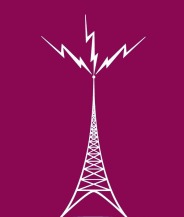





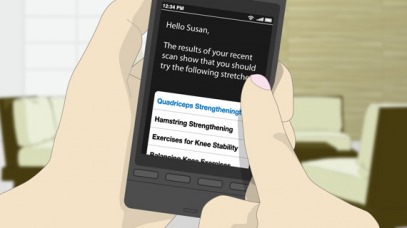
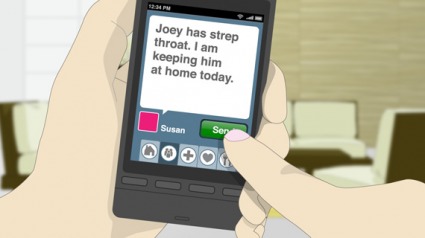
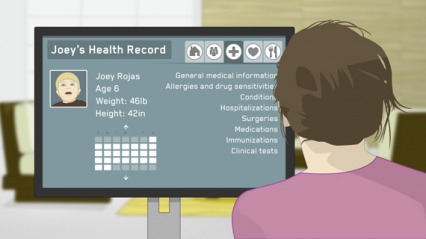
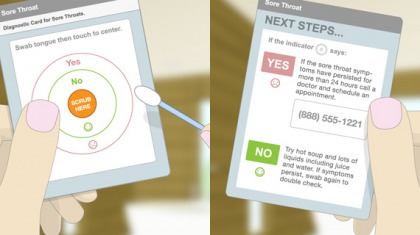
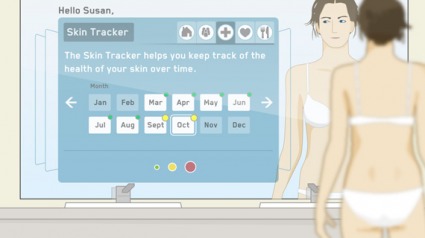

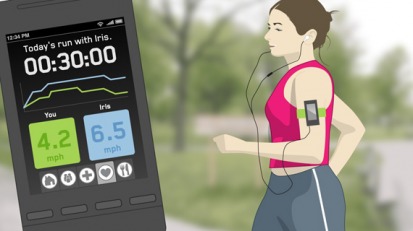



 RSS Feed
RSS Feed